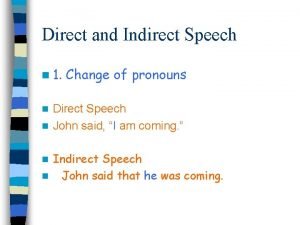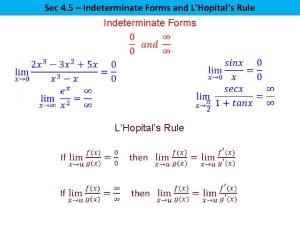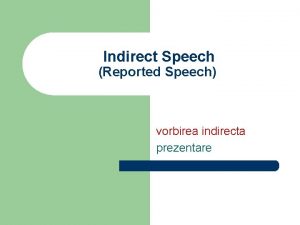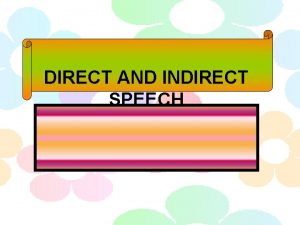INDIRECT SPEECH SAYTELL INDIRECT SPEECH e can use










- Slides: 10

INDIRECT SPEECH SAY/TELL

INDIRECT SPEECH e can use the reporting verb in the present simple in irect speech if the original words are still true or evant at the time of reporting, or if the report is of mething someone often says or repeats:

EXAMPLES Direct Speech: She says, “I am a little bit nervous. ” Indirect Speech: She says that she is a little bit nervous. Reporting Speech: The first part in the direct speech is called reporting speech. Reported Speech: The second part of the sentence, which is closed in inverted commas or quotation marks, is called reported speech.

DIRECT /INDIRECT SPEECH Changes in Person of Pronouns: 1 st Person pronouns in reported speech are always changed according to the subject of the 2 nd Person pronouns in reported speech are always changed according to the object of the reporting speech. 3 rd Person pronouns in

EXAMPLES Direct Speech: He says, “I am ill. ” Indirect Speech: He says that he is ill. Direct Speech: You say, “I shall visit London. ” Indirect Speech: You say that you will visit London.

EXAMPLES She says, “I eat an apple a day. ” She says that she eats an apple a day. He will say, “My brother will help her. ” He will say that his brother will help her. Direct Speech: She says, “I am writing a letter to my brother. ” Indirect Speech: She says that she is writing a letter to her brother.

IMPERATIVE SENTENCES Imperative sentences are sentences that give an order or a direct command. These sentences may be in the shape of advice, entreaty, request, or order. Mostly, it depends upon the forcefulness of the speaker. Thus, a full stop or sign of exclamation is used at the end of the sentence.

EXAMPLES Shut the door! Don’t shut the door! She says not to shut the door! The reporting verb is changed according to reported speech into order in case the sentence gives a direct command. For example: The teacher ordered me to shut the door. She says not to shut the door!

HOMEWORKBOOK, PAGE 49, EX. 4

HOMEWORK, WORKBOOK PAGE 49, EX. 5



















